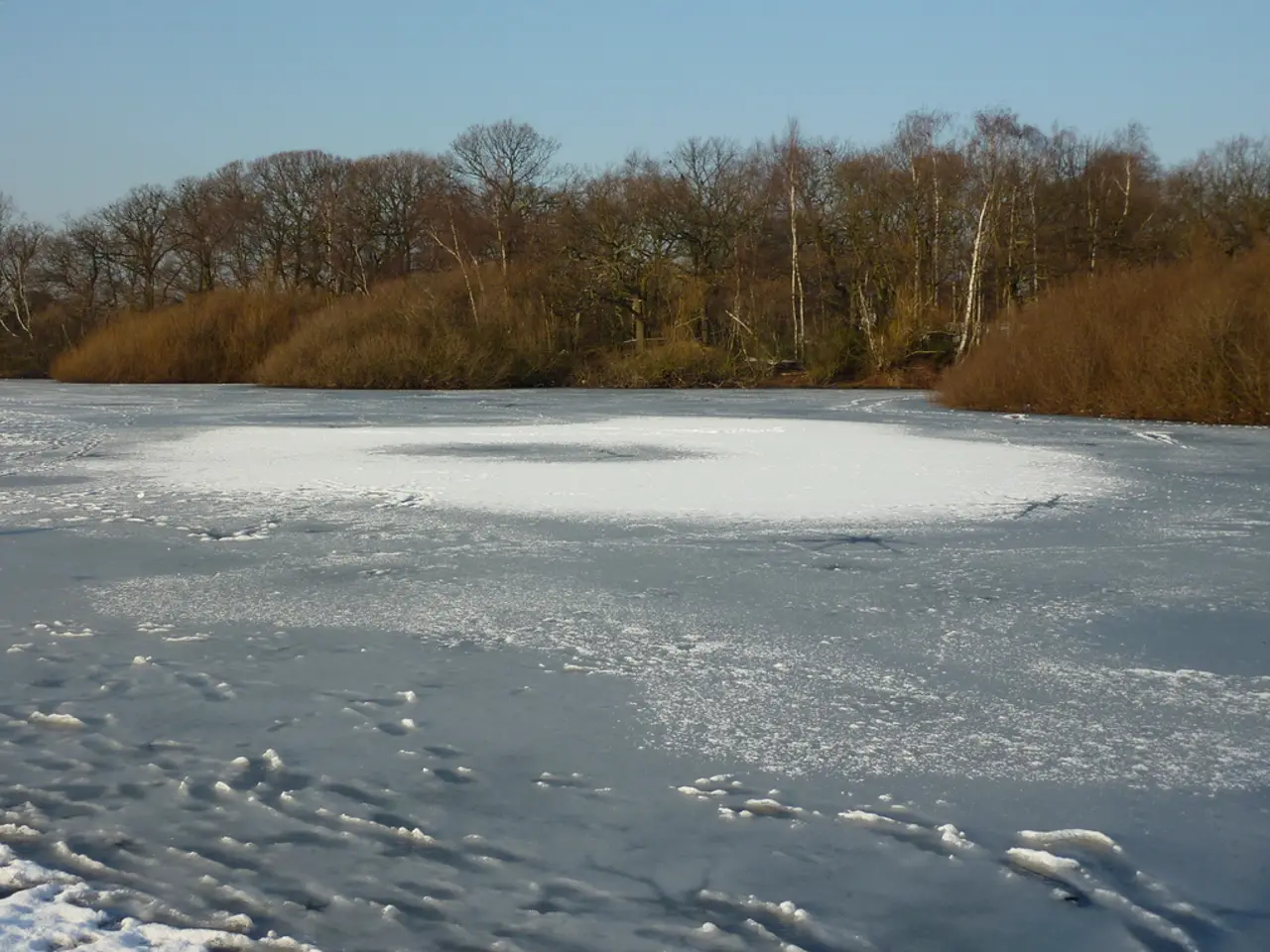Discovered Beneath Antarctic Iceberg: Unanticipated Vibrant, Flourishing Ecosystem Revealed
In a groundbreaking scientific discovery, a team of researchers led by the Schmidt Ocean Institute have uncovered a thriving underwater ecosystem beneath the ice of Antarctica. This newfound biome, revealed following the calving of the massive iceberg A-84, is teeming with life, including giant sponges, fish, enormous sea spiders, and octopuses [1].
The life forms in this subglacial ecosystem are likely sustained by deep-sea ocean currents that flow beneath the ice shelf [2]. The size of these animals suggests that the communities observed have been there for decades, if not even hundreds of years [3].
While the specific details about the newly discovered ecosystem beneath Antarctica's ice are still being unravelled, recent discoveries provide some insights into the microbial and general ecosystems found beneath the continent's ice. For instance, a team of scientists discovered a diverse microbial community beneath a retreating glacier in Antarctica, sustained by symbiotic relationships among organisms [4].
Typically, ecosystems beneath Antarctica's ice are supported by unique conditions such as stable temperatures, protection from extreme surface conditions, and specific nutrient availability. However, the exact mechanisms sustaining newly discovered ecosystems would depend on the specific environmental conditions and interactions within those ecosystems.
Upon arrival at the site of the iceberg, scientists deployed a remotely operated submarine named SuBastian to investigate the underwater biome [6]. The submarine collected biological and geological samples from the region's coral and sea sponges.
The iceberg A-84, which is roughly the size of Chicago, calved from Antarctica's George VI Ice Shelf on January 13, 2025 [7]. The calving presented a rare scientific opportunity for the team to witness the untouched beauty of the underwater biome.
In addition to studying the underwater ecosystem, researchers also deployed other autonomous vehicles to study the effects of meltwater on the region [8]. The expedition co-chief scientist, Patricia Esquete, expressed her surprise at finding such a beautiful, thriving ecosystem, stating, "We didn't expect to find such a beautiful, thriving ecosystem" [9].
This discovery underscores the importance of ongoing research and exploration in Antarctica. As what lies beneath Antarctica's roughly 500 feet (150 meters) of ice remains scarcely known, there is much more to be discovered about this frozen continent and its hidden underworld [10].
For those interested in testing their knowledge on Earth's frozen continent, a quiz on Antarctica is available for readers [11]. Stay tuned for more updates as the research on this newfound ecosystem continues.
The discovery of the thriving underwater ecosystem beneath Antarctica's ice involves environmental-science and data-and-cloud-computing, as researchers collect samples using Remotely Operated Submarine SuBastian and analyze the data to better understand the unique conditions and interactions within the ecosystem. Moreover, the use of autonomous vehicles to study the effects of meltwater also highlights the role of technology in this climate-change research.




